Japanese Type 94 Nambu: Deadliest Pistol of WWII?
August 16th, 2022
6 minute read
Sometimes, it is easy to let a design get away from you. You can start with the best intentions, but the end result might not be what you intended. So it is with the legendary Nambu Type 94 pistol.
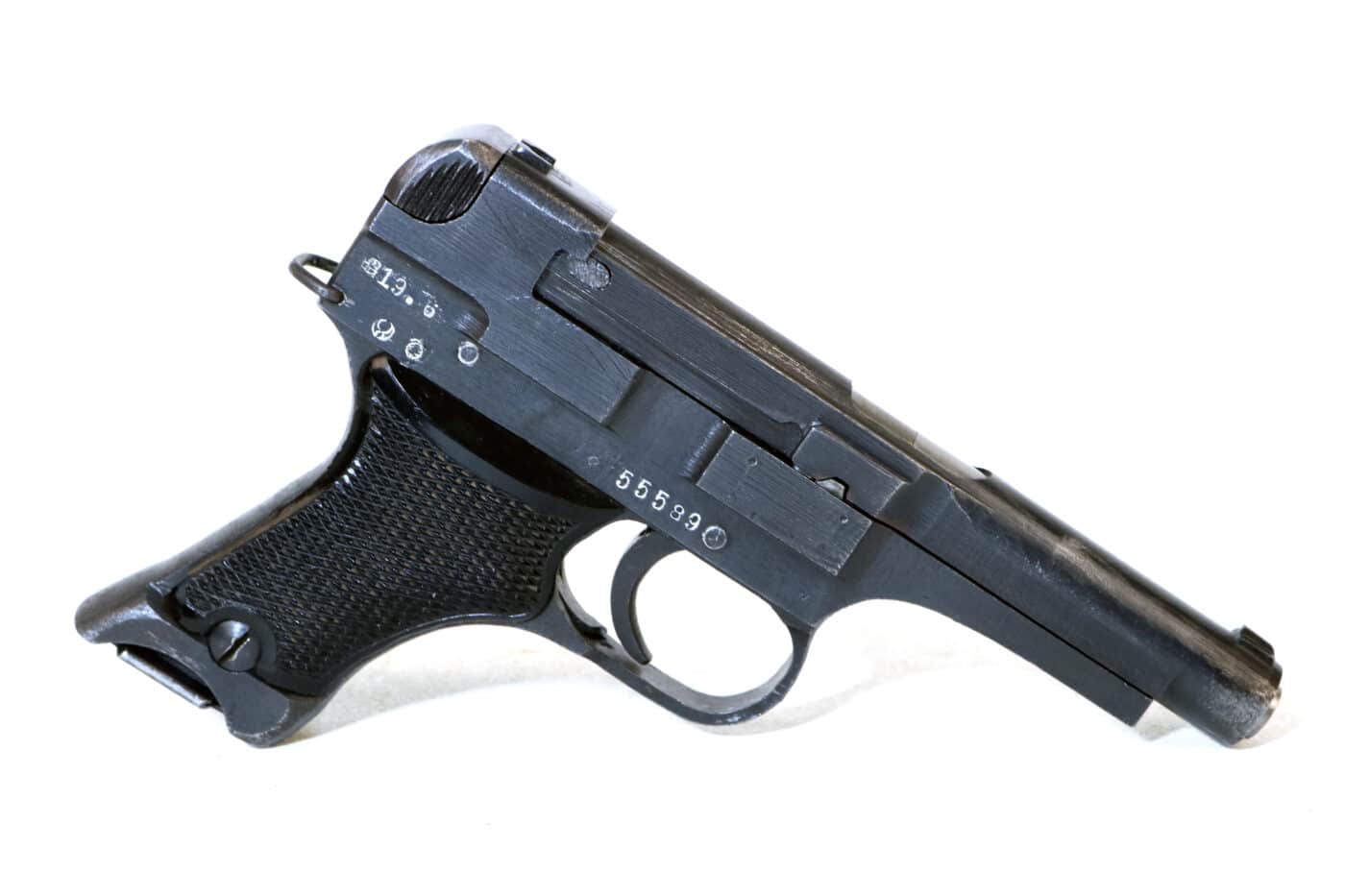
Also known as the 94 Shiki Kenju, the Type 94 was designed by revered Japanese firearms designer Kijiro Nambu as a commercial undertaking in 1934. Once its reputation made the rounds, nobody wanted to buy one. However, the exigencies of total war eventually drove the Japanese to mass produce this fetid piece of mechanical offal anyway.
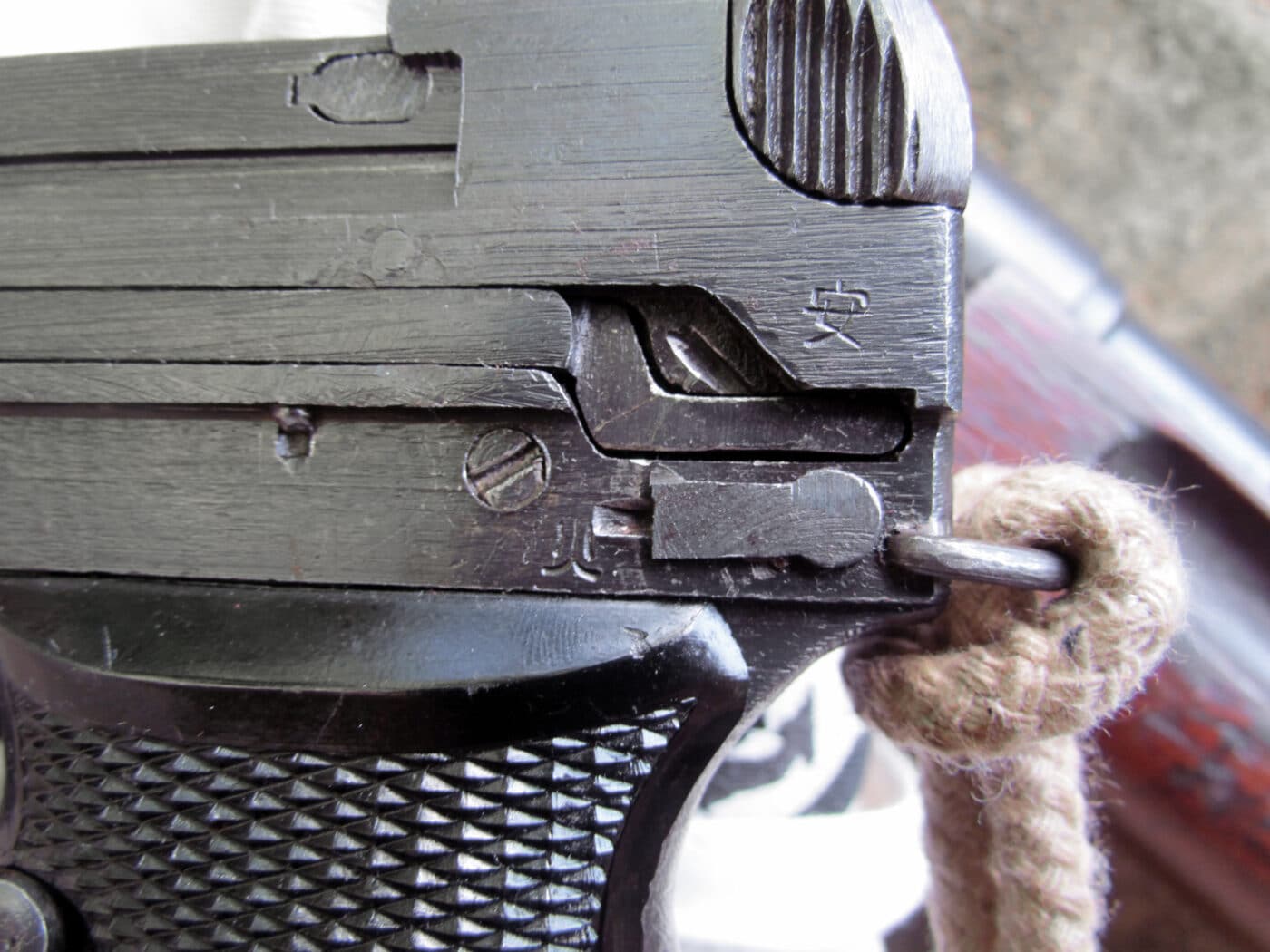
By the time the second American atomic bomb finally turned off Japanese war production in 1945, around 70,000 copies had been produced. The fact that this thing ever saw the light of day speaks to the unimaginably dire straits in which the Japanese obviously found themselves during World War II. If given the option between wielding a Type 94 or a life-sized full-color cutout of Pee-wee Herman in a thong as a close-quarters weapon, I might just choose Pee-wee.
Is the Type 94 That Bad?
In a word, absolutely. The 8x22mm bottlenecked cartridge the Type 94 fires is fairly underpowered for general military use. The 8x22mm puts out just a hair more downrange horsepower than the .380 ACP. The magazine only holds six of these perky little rounds when fully loaded.
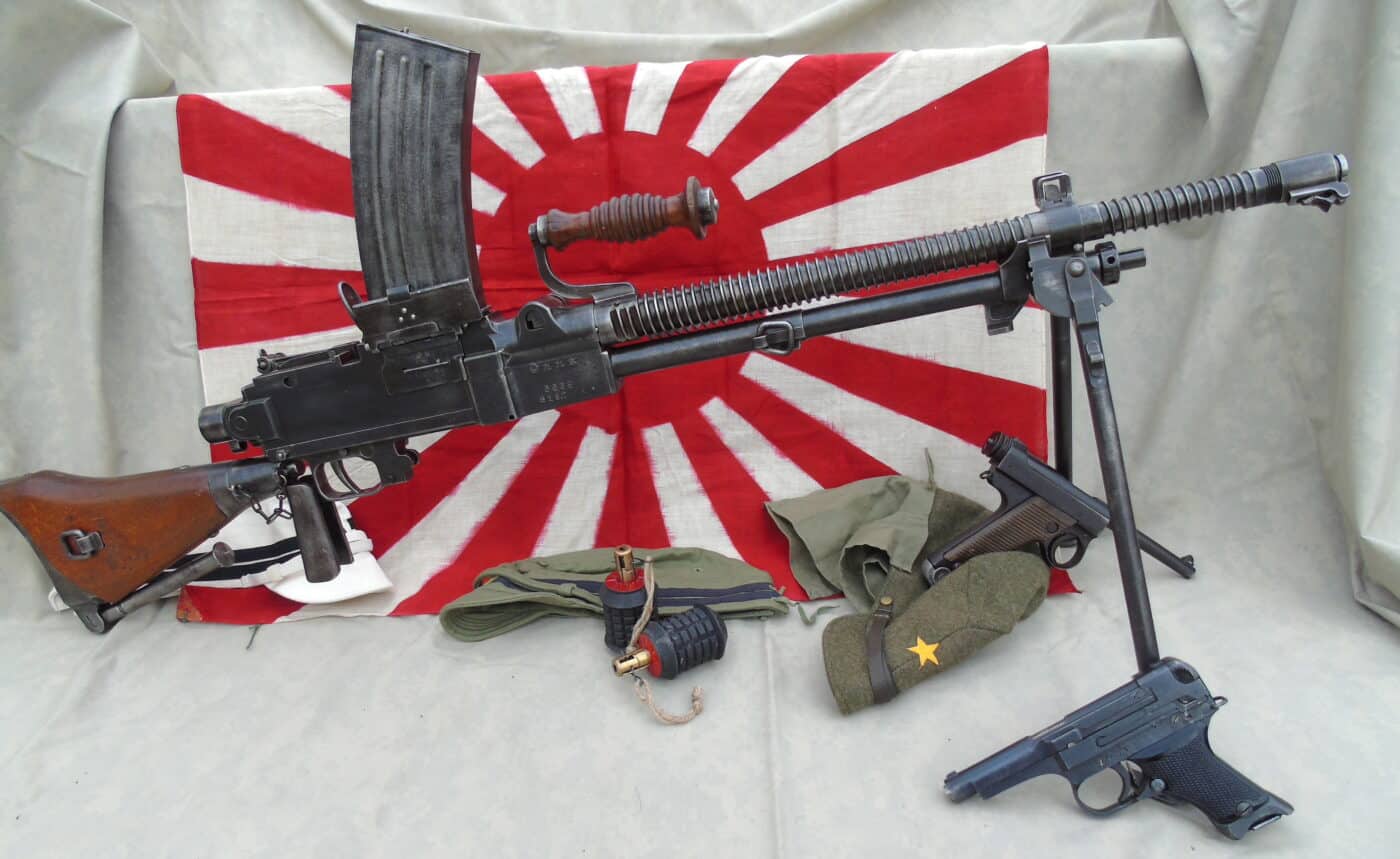
The magazine baseplate on my example is not positively retained. Bump the gun a bit and the baseplate will work loose and launch its entrails across the room unexpectedly. So there’s that.
My Type 94 and I got off to a fairly ignoble start. The first time I drew the action back and released it, the slide pinched the dog snot out of my hand. Things kind of went downhill from there.
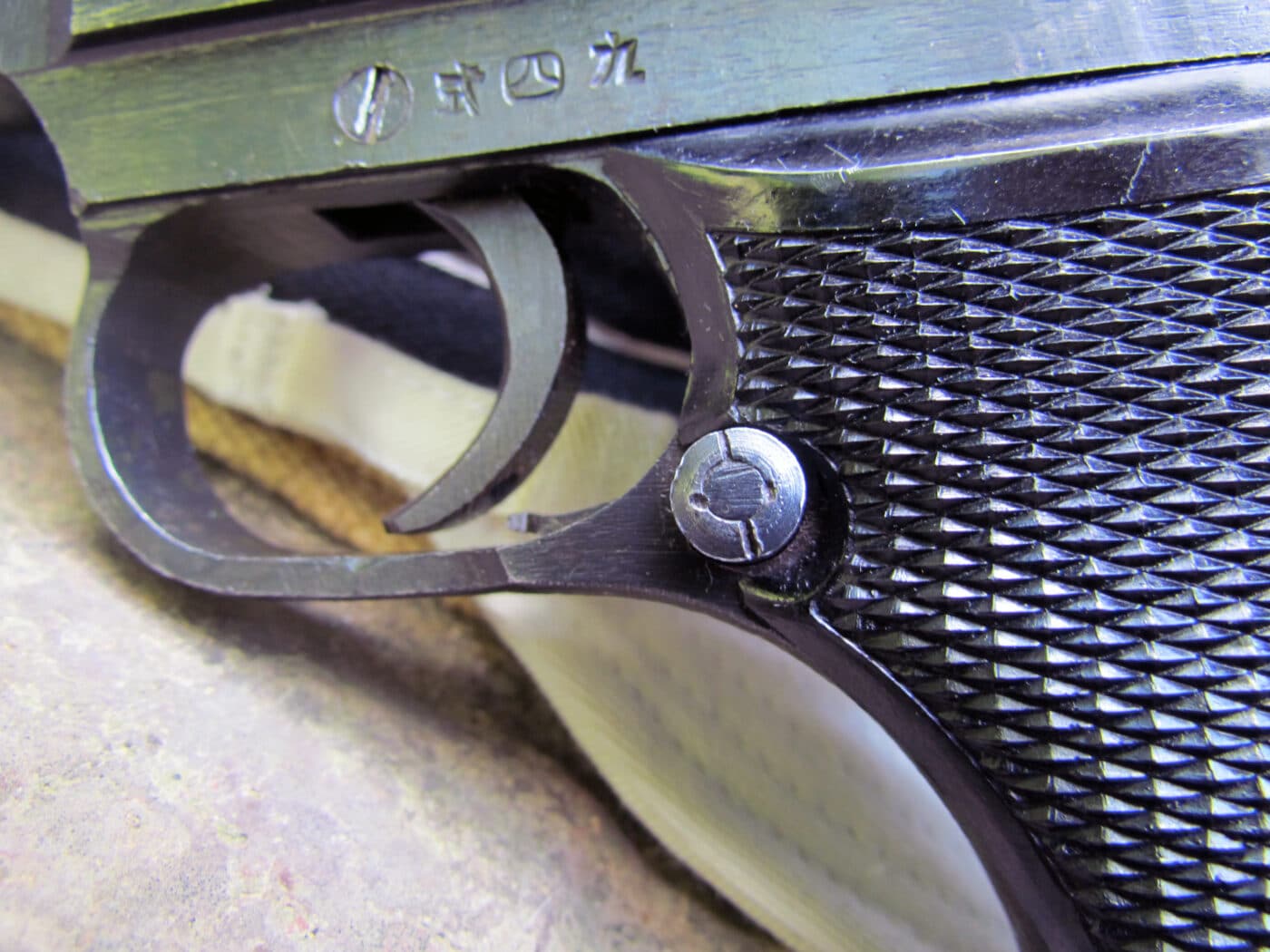
The magazine on my gun is ridiculously tight. Removal is theoretically possible without tools, but you’ll covet a screwdriver or pry bar if you have to do it a lot. Tactical magazine changes generally devolve into writhing about beating on the thing and cursing. There are some little dimples to facilitate grasping the magazine baseplate, but there would honestly be no reloading the gun without them.
The geometry of the Type 94 is just all wrong. The pistol grip tapers from top to bottom. This means it has a tendency to squirt out of the hand when squeezed with verve. The front edges of the frame are left crisp and sharp. That way no matter how you grip it there is something making you at least vaguely uncomfortable all the time.
The sights are nothing more than ballast. They are too small and too low to be of any use at all. The safety is a pivoting lever on the back left. I would comment on its effectiveness, but mine is naturally broken off. I presume its original owner looked at it hard or spoke harshly to it and caused it to fail.
Some of this is no doubt a reflection of the exigencies of total war. Once the B-29 Superfortress bombers came online, we were bombing Japan as much as possible. That had to have taken a toll on production quality. My late-war example is slathered with tool marks and sharp edges aplenty.
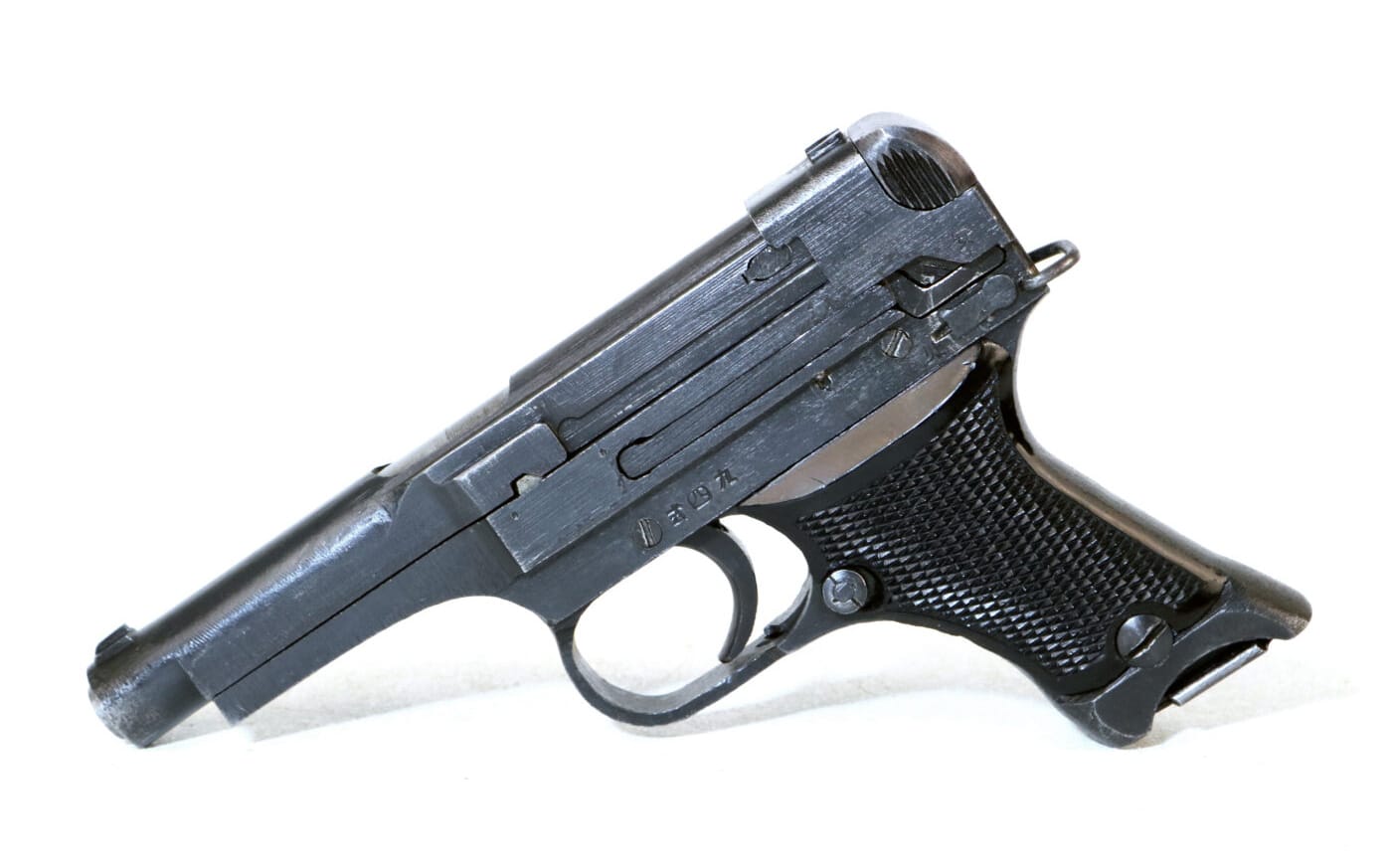
Variants produced even later in the war sported simple wooden grips that look like dunnage harvested from loading pallets. However, it is easy to find fault from the comfort of my writing chair. I’ll forgive a few tool marks and a sharp corner here and there. What comes next, however, is actually a really big deal.
Nambu’s Unforgivable Sin
If there was a school you went to in order to learn how to design guns the first lesson on the first day would be, “Don’t build a gun that can shoot when you’re not touching the trigger.”
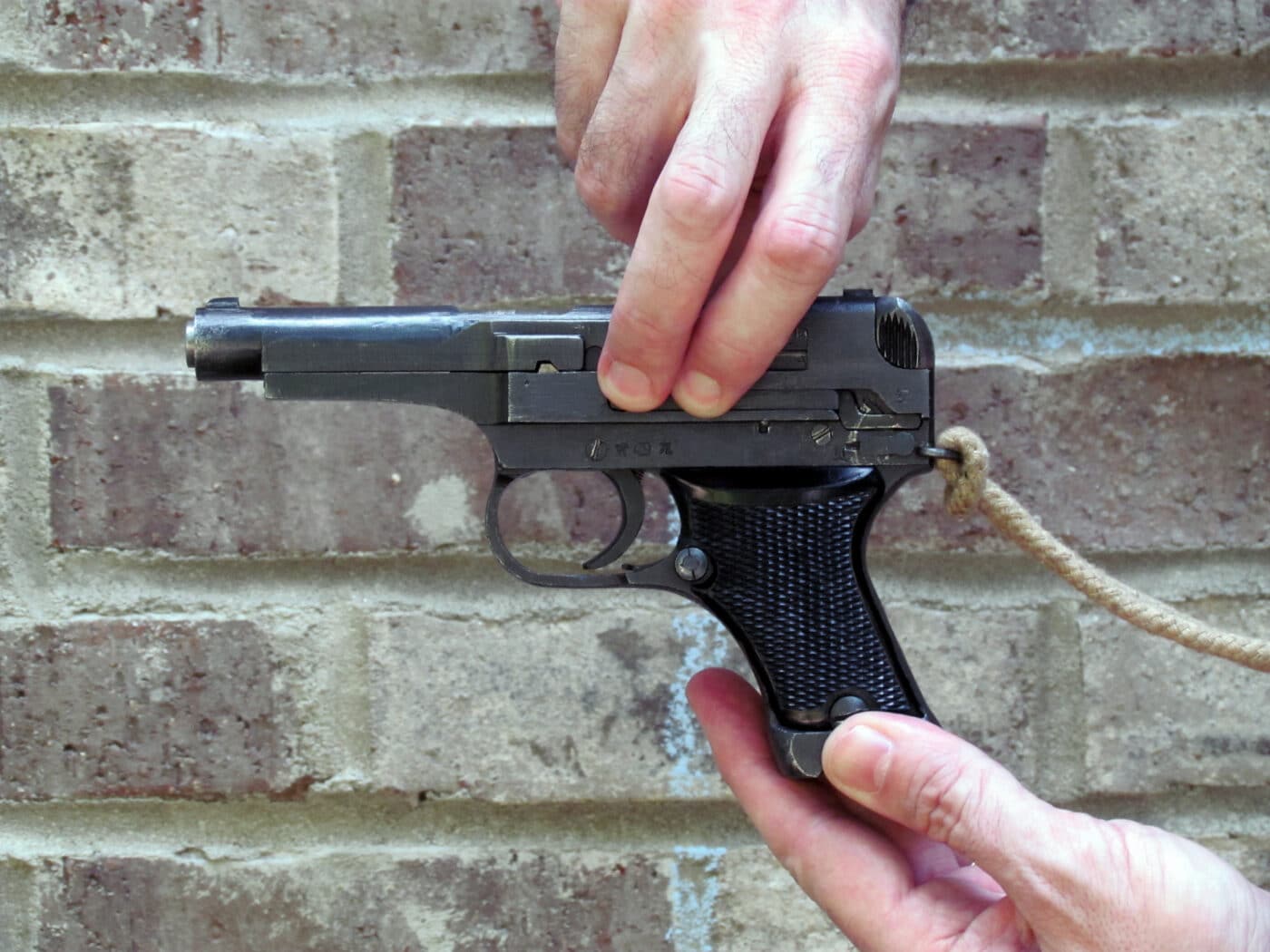
This thing is supposed to be more dangerous to your adversaries than you. In this respect the Type 94 simply fails miserably. The Type 94 Nambu pistol can go off from nothing more egregious than setting it down vigorously on an uneven surface. That’s a pretty big deal.
The fault rests in the design of the trigger bar. All modern autoloading handguns are bullpups if you think about it. The fire controls are oriented ahead of the magazine and feed components. As a result, the mechanical input from the trigger has to get back to the hammer or striker in the rear of the gun to do its job. In the case of the Type 94, this mechanical linkage is a pivoting steel bar oriented along the left aspect of the frame. So far, so good.
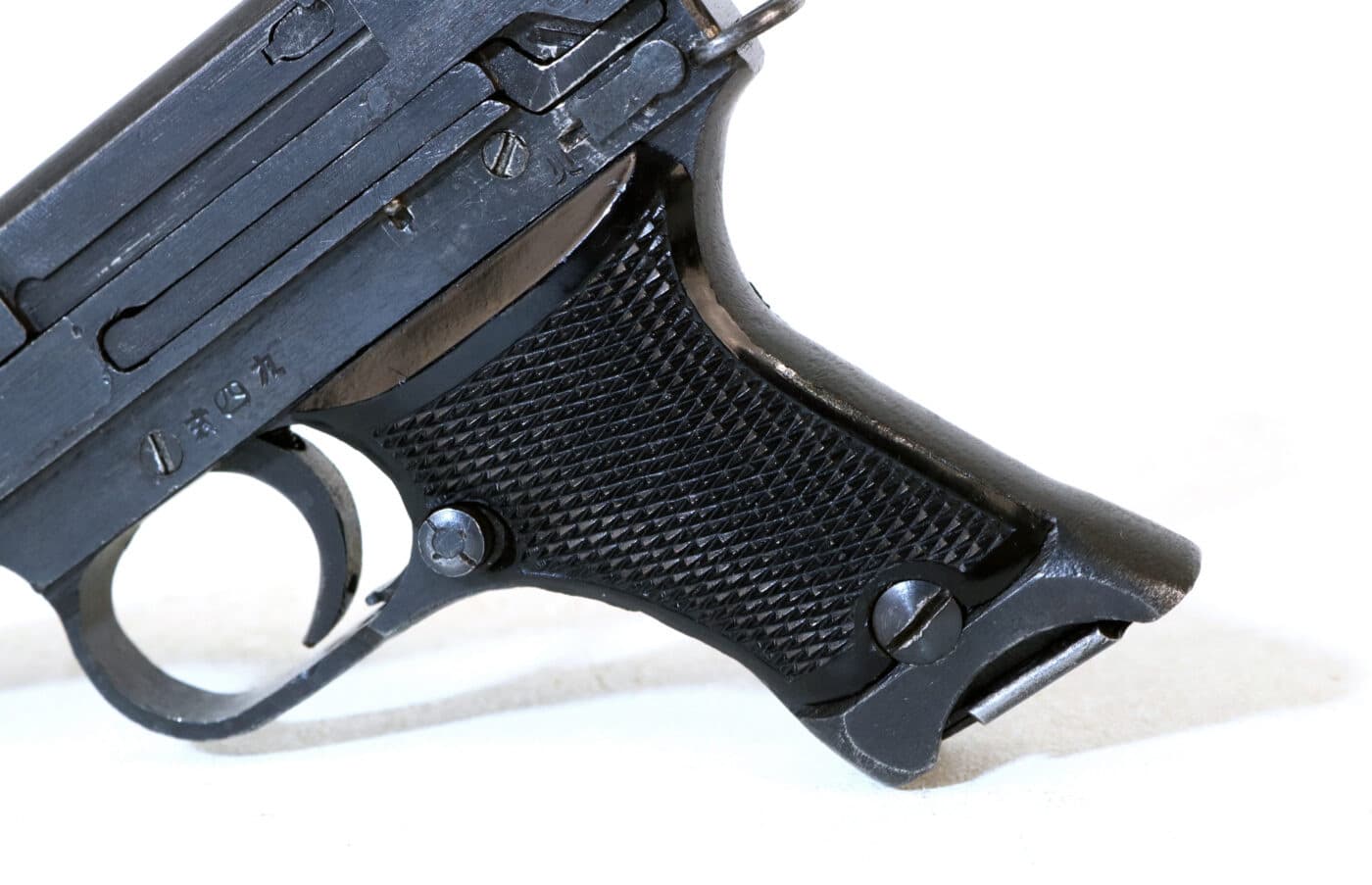
The problem is that once the gun is charged, light pressure on the end of the trigger bar will trip the striker and fire the weapon. You can undertake this clever parlor trick by grasping the unloaded gun from the top with your fingers alongside the sides of the frame and giving the gun a squeeze. Pressure on the exposed end of the trigger bar will indeed light it off. This could happen if you grabbed it wrong or just placed it on an uneven surface such that something might impinge upon the trigger bar.
Editor’s Note: We’ve often wondered if the Nambu Type 94 was the deadliest pistol of World War II due to the casualties it caused to its own side. Unfortunately, we’ve never seen any record-keeping that would either prove or disprove our thoughts. Nevertheless, we agree with the author’s assessment and think this is the worst pistol ever.
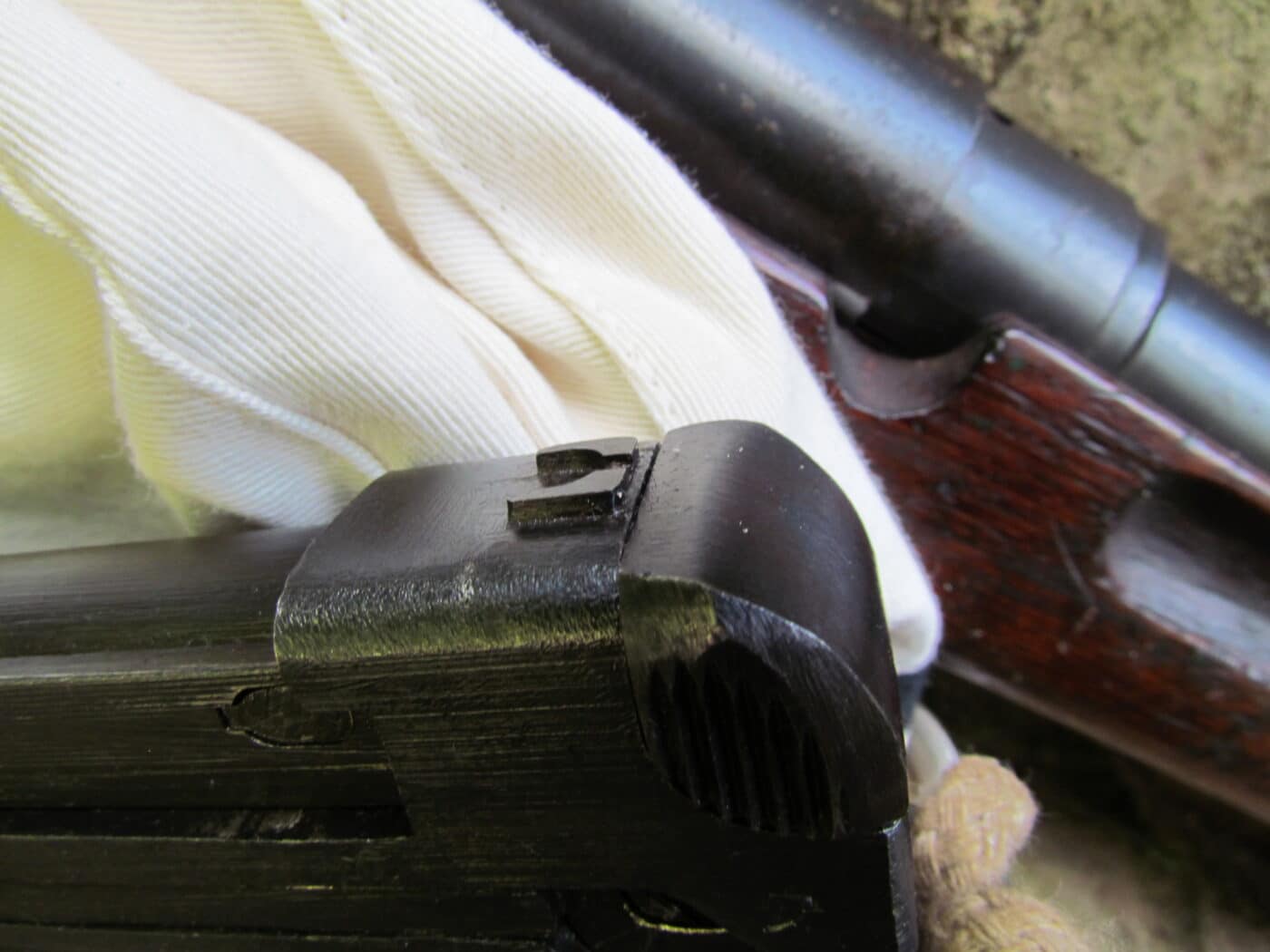
During the war, many G.I.s suspected this was a feature rather than a bug. It was postulated that the Type 94 was contrived such that an enemy officer could fake a surrender by holding his sidearm in a non-threatening fashion and then fire it surreptitiously to turn the tables on an attacker. Personally, I don’t buy it. I think General Nambu just got in a hurry that day and let himself get sloppy. As a result, the Type 94 was destined to bear the derisive brunt of gun writers everywhere from its very outset.
Denouement of the Worst Japanese Pistol of WWII
I have no idea what General Nambu was thinking when he thought up this ghastly handgun. Perhaps he had a stomach virus or was suffering from domestic troubles with Mrs. Nambu. Transient idiopathic insanity would also be among my differential diagnoses. For whatever reason, he did actually birth this dreadful thing.
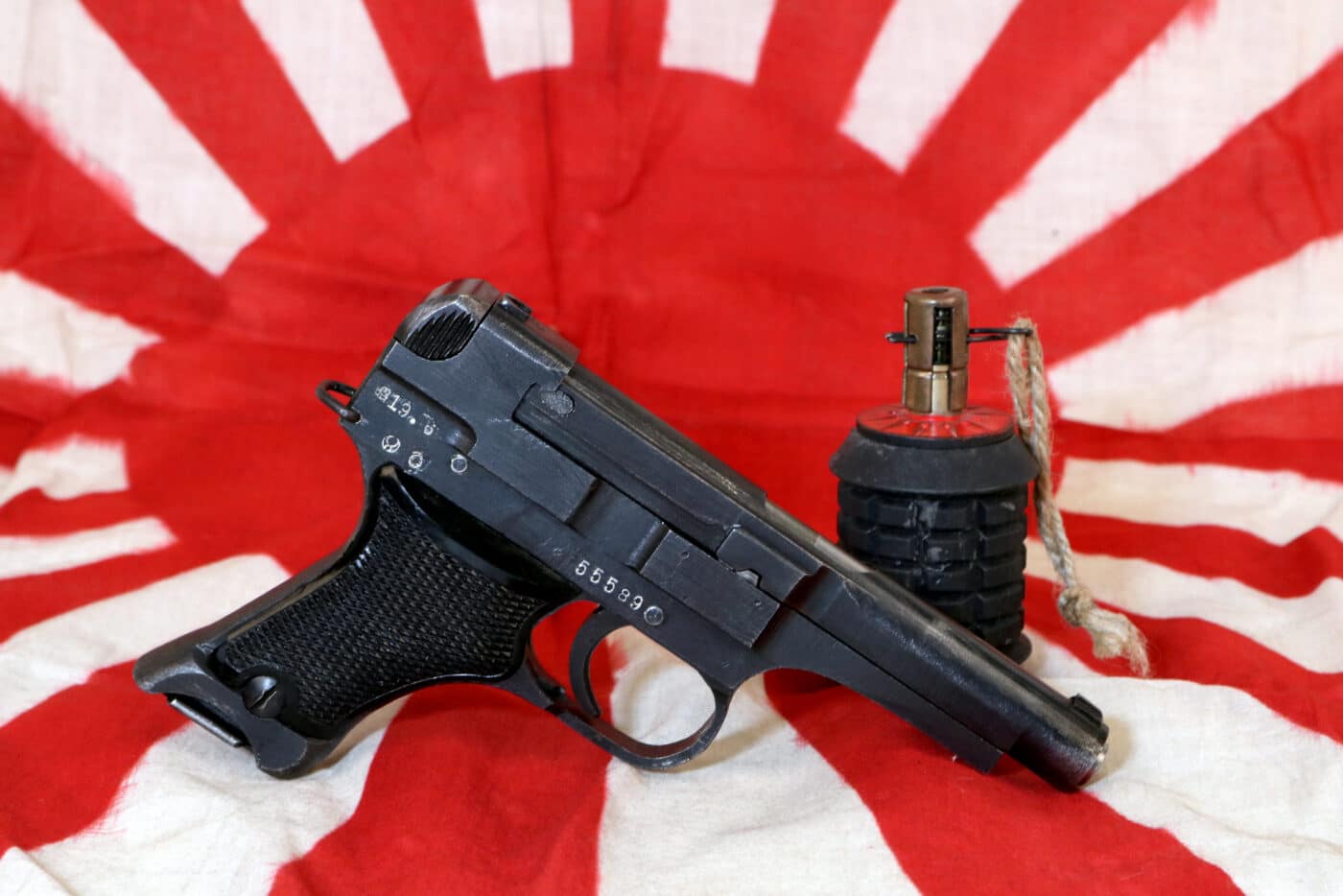
But, at the end of the day, be careful how you disparage the guy. If you find yourself in possession of a Type 94 pistol and some of its insanely expensive 8x22mm ammo, then General Nambu’s ghost can still reach out from the grave and strike you with this pistol if you are not careful. From where I sit, that cinches the title of “Worst Combat Pistol in the History of Mankind.”
Special thanks to World War Supply for the reproduction Japanese equipment used in support of this article.
Editor’s Note: Be sure to check out The Armory Life Forum, where you can comment about our daily articles, as well as just talk guns and gear. Click the “Go To Forum Thread” link below to jump in!
Join the Discussion
Featured in this article
Continue Reading
Did you enjoy this article?

 127
127







